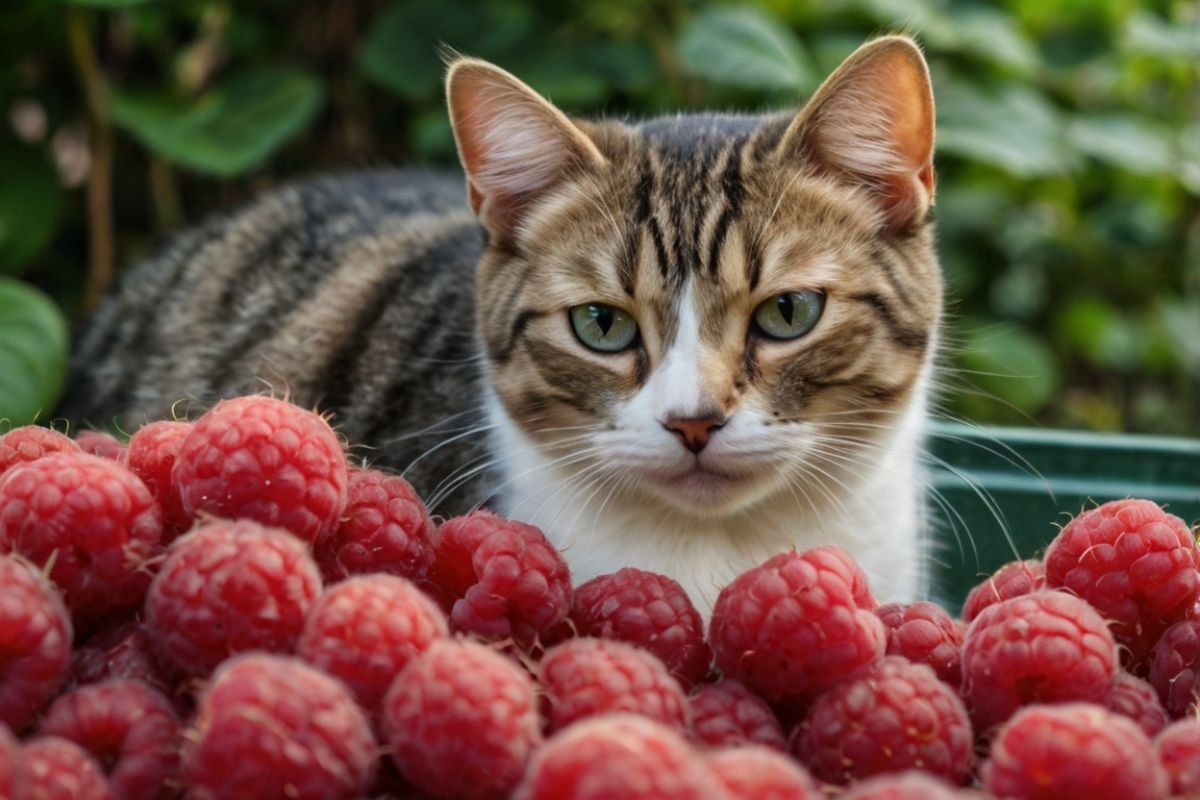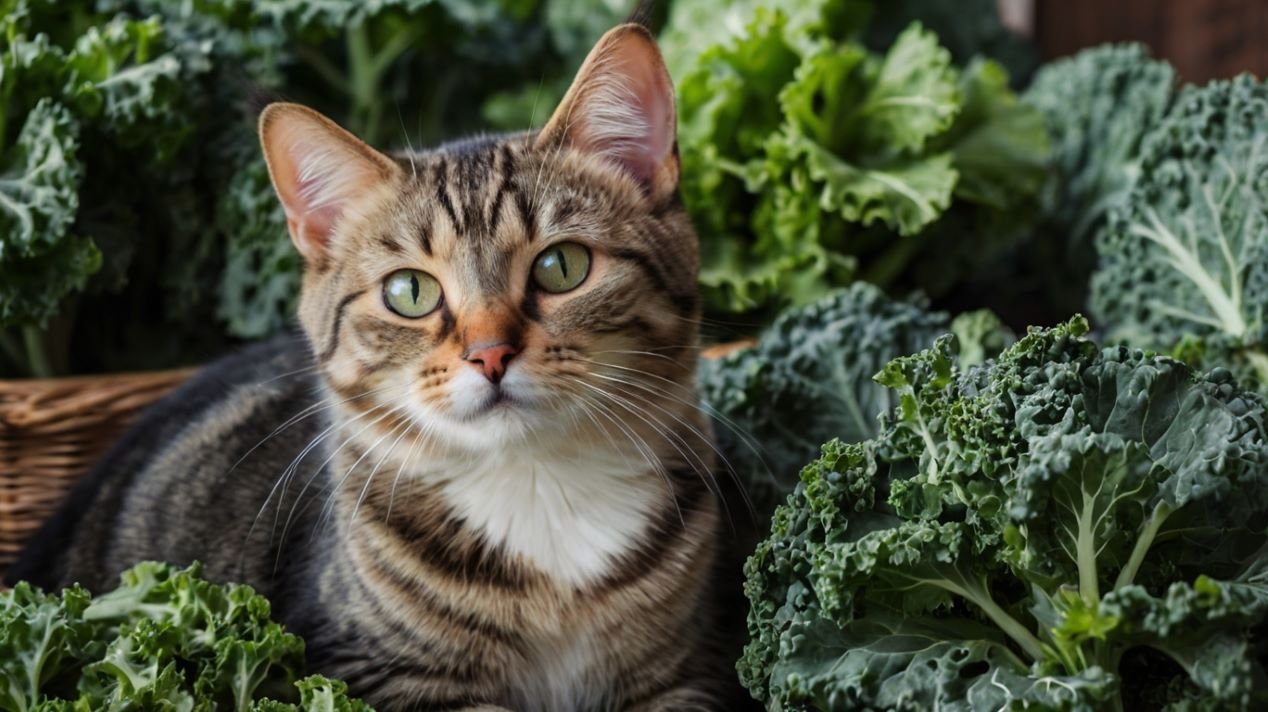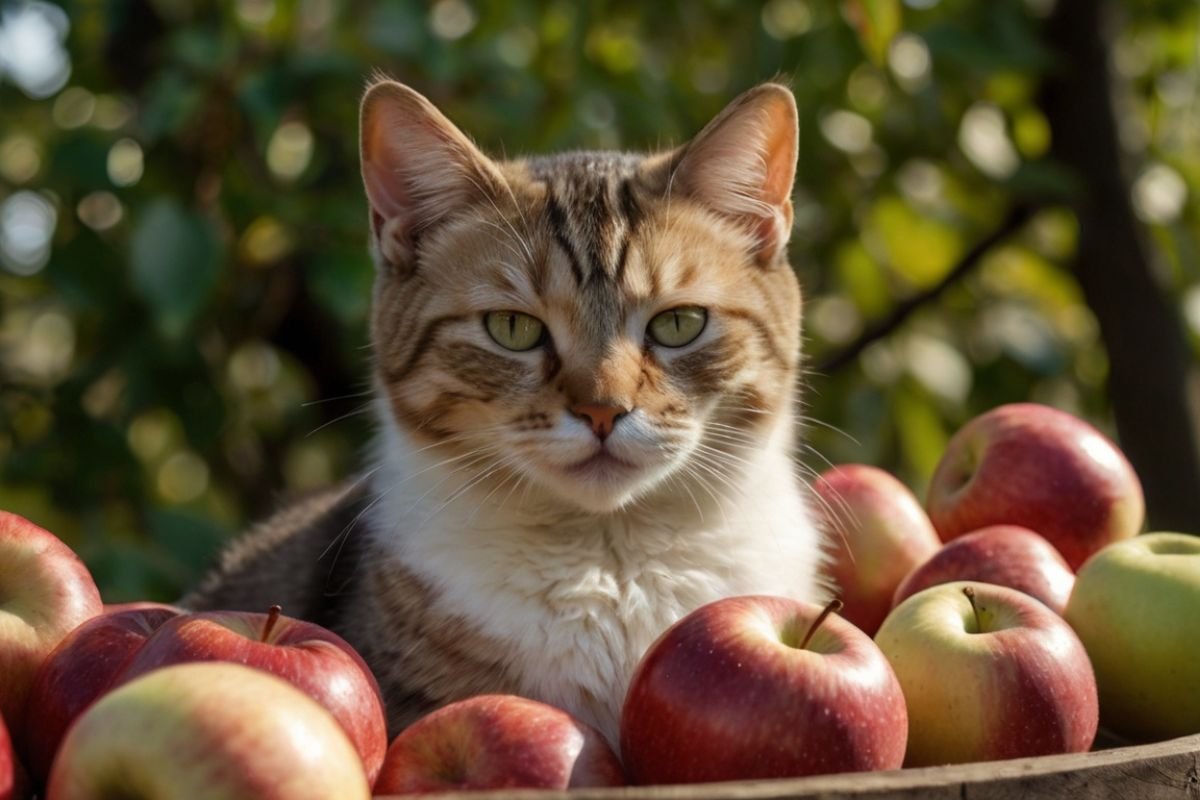If you’re like me, you’ve probably been slicing up an avocado and suddenly felt two little eyes staring at you. My cat Rio, a two-year-old orange tabby, does this every time. He watches every bite I take, hoping I’ll drop a little piece for him.
And naturally, I wondered—can cats eat avocado? Is it safe for Rio or any cat?
Avocados are a trendy food for us humans. They’re creamy, healthy, and full of good fats. But when it comes to cats, things get a bit more complicated.
In this blog post, we’ll explore everything you need to know about cats and avocados—from nutrients to dangers, from safe parts to toxic ones. You’ll leave with clarity and confidence about whether your little purring friend can share that avocado toast with you.
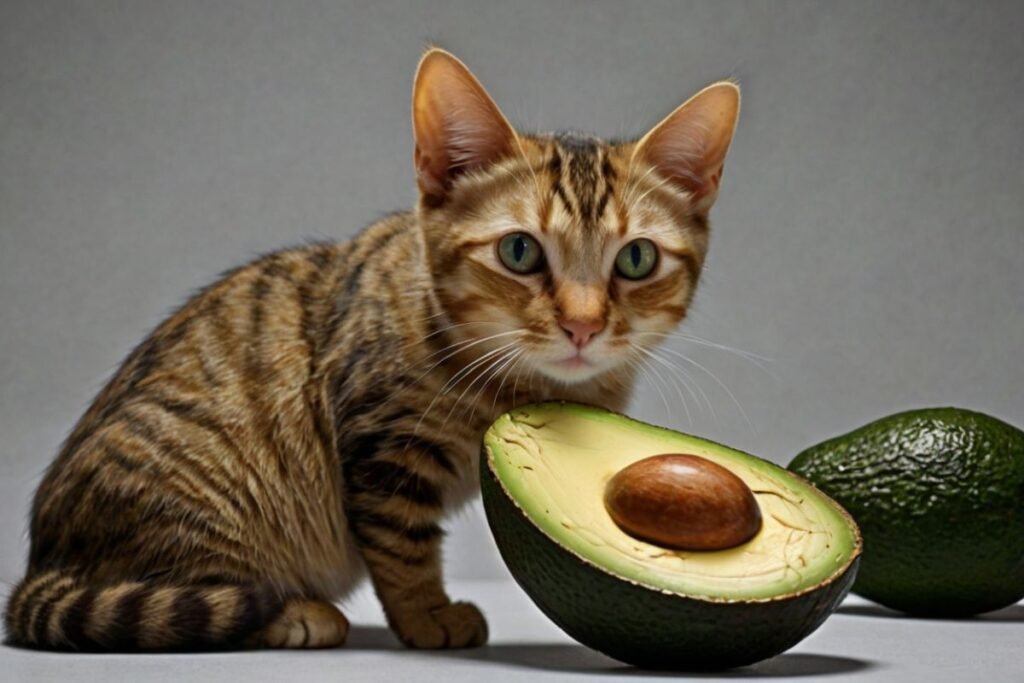
Table of Contents
The Quick Answer: Can Cats Really Eat Avocado?
Here’s the truth: Cats can eat tiny amounts of avocado flesh. However, most parts of the avocado are toxic to cats. Furthermore, even the safe parts aren’t necessary for your cat’s health.
Let me break this down clearly:
Safe in tiny amounts:
- Avocado flesh (the green part we eat)
Dangerous and toxic:
- Avocado skin
- Avocado pit
- Avocado leaves
- Avocado bark
Even though the flesh is safer, it still carries risks. Therefore, most vets suggest avoiding avocados altogether. After all, cats don’t need avocados to be healthy.
Also read, Can Cats Eat Blackberries?
Understanding Your Cat’s Unique Dietary Needs
Before we dive deeper, let’s talk about what cats actually need. Cats are obligate carnivores. This means their bodies evolved to eat meat exclusively. Unlike humans, they can’t process plant foods efficiently.
Your cat’s digestive system works differently from yours. While you benefit from fruits and vegetables, your cat gets everything from meat. In fact, cats need specific nutrients found only in animal tissue.
This is why house cats still hunt mice and birds. Their instincts tell them what their bodies need. Therefore, adding fruits like avocado doesn’t provide real benefits.
Additionally, cats have sensitive stomachs. New foods often cause digestive upset. Even safe human foods can make cats sick. This is especially true for foods cats didn’t evolve eating.
What Makes Avocado Dangerous for Cats?
The main danger comes from a compound called persin. This fungal toxin exists throughout avocado plants. However, different parts contain different amounts.
Persin affects animals differently. For birds, rabbits, and horses, it’s often deadly. Fortunately, cats and dogs are less sensitive. Nevertheless, persin can still cause serious problems.
Here’s where you’ll find the most persin:
- Avocado skin (highest concentration)
- Avocado pit (very high)
- Leaves and bark (extremely high)
- Avocado flesh (lowest, but still present)
When cats consume too much persin, several things happen. First, their digestive system becomes irritated. Then, they might experience breathing problems. Finally, more serious symptoms can develop.
My two-year-old orange cat Rio once licked a tiny bit of avocado. Fortunately, he showed no symptoms. However, I watched him closely for hours. This experience taught me to be more careful.
Recognizing Avocado Poisoning in Cats
Knowing the warning signs could save your cat’s life. Therefore, watch for these symptoms after avocado exposure:
Digestive symptoms:
- Vomiting
- Diarrhea
- Loss of appetite
- Drooling
Physical symptoms:
- Difficulty breathing
- Swollen belly
- Lethargy
- Lack of coordination
Behavioral changes:
- Hiding
- Unusual quietness
- Refusal to eat or drink
If you notice any of these signs, contact your vet immediately. Don’t wait to see if symptoms improve. Early treatment prevents serious complications.
Additionally, keep the avocado packaging if possible. This helps your vet understand how much your cat ate. Also, note the time when exposure occurred.
The Nutritional Reality: Do Cats Benefit from Avocado?
Let’s examine what avocados contain. Then, we’ll see if cats actually benefit from these nutrients.
Avocado nutrition per 100 grams:
- Healthy fats: 15 grams
- Fiber: 7 grams
- Potassium: 485 milligrams
- Vitamins: E, C, B6, K
- Antioxidants: Lutein and zeaxanthin
These nutrients sound impressive. However, cats process them differently than humans do. Let’s look at each one:
Healthy fats: Cats need fats, but they get better sources from meat. Fish oils and chicken fat work better for cats.
Fiber: Cats need very little fiber. Too much fiber actually causes digestive problems in cats.
Potassium: Cats get plenty of potassium from meat. Extra potassium can stress their kidneys.
Vitamins: Cats make some vitamins internally. Others come from prey animals they’d naturally eat.
Antioxidants: While beneficial, cats get antioxidants from organ meats and fish.
Therefore, avocado doesn’t fill any nutritional gaps for cats. In fact, it might create imbalances instead.
Parts of Avocado That Are Never Safe
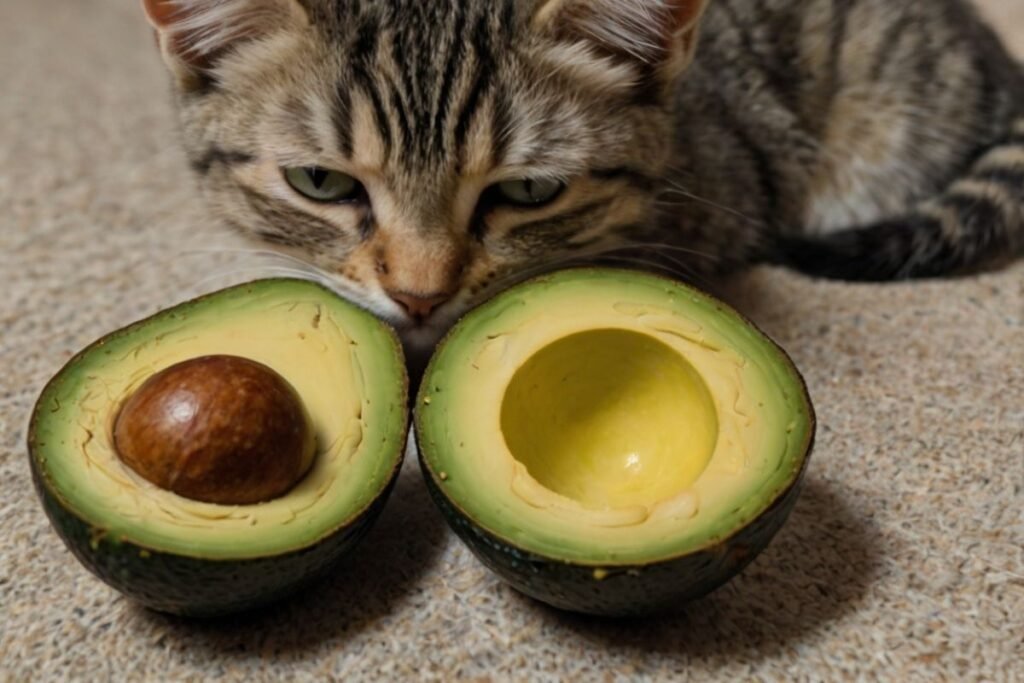
Some parts of avocados are always dangerous for cats. Never allow your cat access to these:
Avocado Skin
The skin contains high levels of persin. Additionally, it’s tough and indigestible. If swallowed, it could cause intestinal blockage. Furthermore, the texture makes it a choking hazard.
Avocado Pit
This is extremely dangerous for multiple reasons. First, it contains concentrated persin. Second, it’s a serious choking hazard. Third, if swallowed, it could block your cat’s intestines completely.
Intestinal blockage requires emergency surgery. Without treatment, it’s fatal. Therefore, always dispose of avocado pits safely.
Leaves and Bark
If you grow avocado trees, be extra careful. The leaves and bark contain the highest persin levels. Even small amounts can make cats very sick.
Keep cats away from avocado plants entirely. Also, clean up any fallen leaves immediately.
Guacamole and Seasoned Avocado
Never give cats guacamole or seasoned avocado dishes. These contain multiple toxic ingredients:
- Onions (highly toxic to cats)
- Garlic (causes anemia in cats)
- Salt (harmful in large amounts)
- Lime (acidic and irritating)
- Spices (can cause digestive upset)
Even tiny amounts of onion or garlic can poison cats. Therefore, keep all seasoned avocado dishes away from your cat.
When Avocado Might Be “Okay” for Cats
Some situations make avocado slightly less risky. However, “less risky” doesn’t mean “safe” or “recommended.”
Processed Avocado in Pet Foods
Some high-quality cat foods contain avocado meal or oil. These ingredients go through special processing. This processing removes most toxic compounds.
Pet food companies test these ingredients extensively. They ensure safety before including them in formulas. However, this doesn’t mean raw avocado is safe.
Tiny Accidental Exposures
If your cat licks a tiny bit of avocado flesh, don’t panic. Watch them closely for symptoms. Most cats handle very small amounts without problems.
However, don’t use this as permission to feed avocado regularly. Repeated exposure increases risks. Also, some cats are more sensitive than others.
Safe Amounts: How Much Is Too Much?
Veterinarians generally recommend avoiding avocado completely. However, if accidental exposure happens, here are the guidelines:
Maximum safe amount: Less than 1/4 teaspoon of flesh only Frequency: Never more than once Preparation: Plain, mashed, no seasonings
Even these tiny amounts carry risks. Therefore, it’s better to avoid avocado altogether.
Remember, cats weigh much less than humans. What seems like a tiny amount to you could be significant for your cat.
Special Considerations for Kittens
Kittens need extra protection from avocado. Their developing digestive systems are more sensitive. Additionally, their smaller size means toxic effects happen faster.
Young kittens should never have any avocado exposure. Their immune systems aren’t fully developed. Therefore, they can’t handle toxins as well as adult cats.
Instead, focus on high-quality kitten food. This provides everything growing kittens need. Save the experimental treats for when they’re fully grown.
Better Treat Alternatives for Your Cat
Instead of avocado, try these safe, healthy treats:
Protein-Based Treats
Cooked chicken: Remove skin and bones. Cut into small pieces. Most cats love this treat.
Plain tuna: Use tuna in water, not oil. Offer occasionally as a special treat.
Freeze-dried salmon: These treats are convenient and nutritious. They’re also rich in omega-3 fatty acids.
Vegetable Options (in moderation)
Plain pumpkin: Helps with digestion. Use pure pumpkin, not pie filling.
Cooked sweet potato: Mash thoroughly. Offer tiny amounts only.
Steamed broccoli: Some cats enjoy the texture. Remove stems and chop finely.
Commercial Cat Treats
Choose treats made specifically for cats. These undergo safety testing. Additionally, they’re formulated for feline nutrition.
Look for treats with simple ingredient lists. Avoid products with artificial colors or excessive fillers.
What to Do If Your Cat Eats Avocado
Despite your best efforts, accidents happen. Here’s what to do if your cat eats avocado:
Immediate Steps
- Remove any remaining avocado from your cat’s reach
- Check what parts your cat ate (flesh, skin, pit)
- Estimate how much they consumed
- Note the time of exposure
Assessment
If your cat only licked a tiny bit of flesh, monitor closely. Watch for symptoms over the next 24 hours.
If your cat ate skin, pit, or large amounts of flesh, contact your vet immediately. Don’t wait for symptoms to appear.
When to Call the Vet
Call immediately if your cat ate:
- Any amount of skin or pit
- More than a teaspoon of flesh
- Any seasoned avocado dish
Also call if you notice any symptoms, regardless of the amount eaten.
What to Tell Your Vet
Provide this information:
- What parts your cat ate
- Approximate amount consumed
- Time since exposure
- Your cat’s current symptoms
- Your cat’s weight and age
This information helps your vet determine the best treatment approach.
Prevention: Keeping Your Cat Safe
Prevention is always better than treatment. Here are ways to keep avocados away from curious cats:
Storage Solutions
Store avocados in sealed containers. Keep them in high cabinets your cat can’t reach. Additionally, refrigerate cut avocados immediately.
Preparation Safety
When preparing avocados, work in a cat-free area. Clean up immediately after cooking. Dispose of peels and pits in secure trash containers.
Guest Education
Inform guests about your cat’s dietary restrictions. Many people don’t realize human foods can harm cats. Therefore, ask them not to share food with your cat.
Emergency Preparedness
Keep your vet’s phone number easily accessible. Also, locate the nearest emergency animal hospital. Quick access to help could save your cat’s life.
The Science Behind Feline Nutrition
Understanding why cats can’t eat many human foods helps prevent accidents. Cats evolved as strict carnivores over millions of years. Their bodies became highly specialized for processing meat.
This specialization created some limitations. For example, cats can’t taste sweetness. They also can’t efficiently process carbohydrates. Additionally, they require nutrients found only in animal tissue.
These evolutionary adaptations explain why cats react differently to foods than humans do. What’s healthy for us might be harmful for them.
Reading Cat Food Labels
Since some cat foods contain avocado ingredients, learn to read labels carefully. Look for these terms:
- Avocado meal
- Avocado oil
- Persea americana (scientific name)
These processed ingredients are generally safe in commercial pet foods. However, this doesn’t mean raw avocado is safe for home feeding.
Reputable pet food companies follow strict safety protocols. They test ingredients thoroughly before including them in formulas.
Long-Term Health Considerations
Regular avocado consumption could cause long-term health problems in cats. Even if immediate symptoms don’t appear, damage might accumulate over time.
Possible long-term effects include:
- Digestive system irritation
- Liver stress
- Kidney problems
- Nutritional imbalances
These problems develop slowly. Therefore, you might not notice them immediately. By the time symptoms appear, significant damage might have occurred.
Building Healthy Eating Habits
Instead of sharing human food, build healthy eating habits for your cat. Establish regular meal times with high-quality cat food. This provides complete nutrition without risks.
Treat time can still be special. Use cat-specific treats or small pieces of cooked chicken. Your cat will appreciate the attention more than the specific food.
Rio gets excited about his regular treats just as much as any human food. The bonding experience matters more than the treat itself.
When to Consult Your Veterinarian
Regular vet checkups help maintain your cat’s health. During these visits, discuss your cat’s diet and treat preferences.
Your vet can recommend safe treats based on your cat’s specific needs. Additionally, they can advise about foods to avoid completely.
If you have questions about specific foods, ask your vet rather than experimenting. Their expertise prevents dangerous mistakes.
Final Thoughts: Keeping Your Cat Happy and Healthy
Caring for a cat means making decisions in their best interest. Sometimes this means saying no to sharing foods we enjoy.
Your cat doesn’t need avocado to be happy. They need consistent nutrition, fresh water, and your attention. These basic needs matter more than exotic treats.
When those curious eyes watch you eat, remember that your love keeps them safe. A gentle pet or play session shows affection better than risky treats.
Choose cat-safe ways to bond with your feline friend. After all, their health and safety are worth more than any trendy food.
The next time you’re preparing avocado, enjoy it yourself. Your cat will be perfectly content with their regular food and your loving attention. That’s a recipe for a long, healthy life together.

Shahriar Robin is the creator of WhatPetsCanEat.com, a passionate pet lover and dedicated cat dad to Rio, a curious two-year-old orange feline who inspired this website. With a love for animals and a knack for research, Shahriar shares trusted, easy-to-understand information to help fellow pet owners make safe, healthy food choices for their furry friends.
